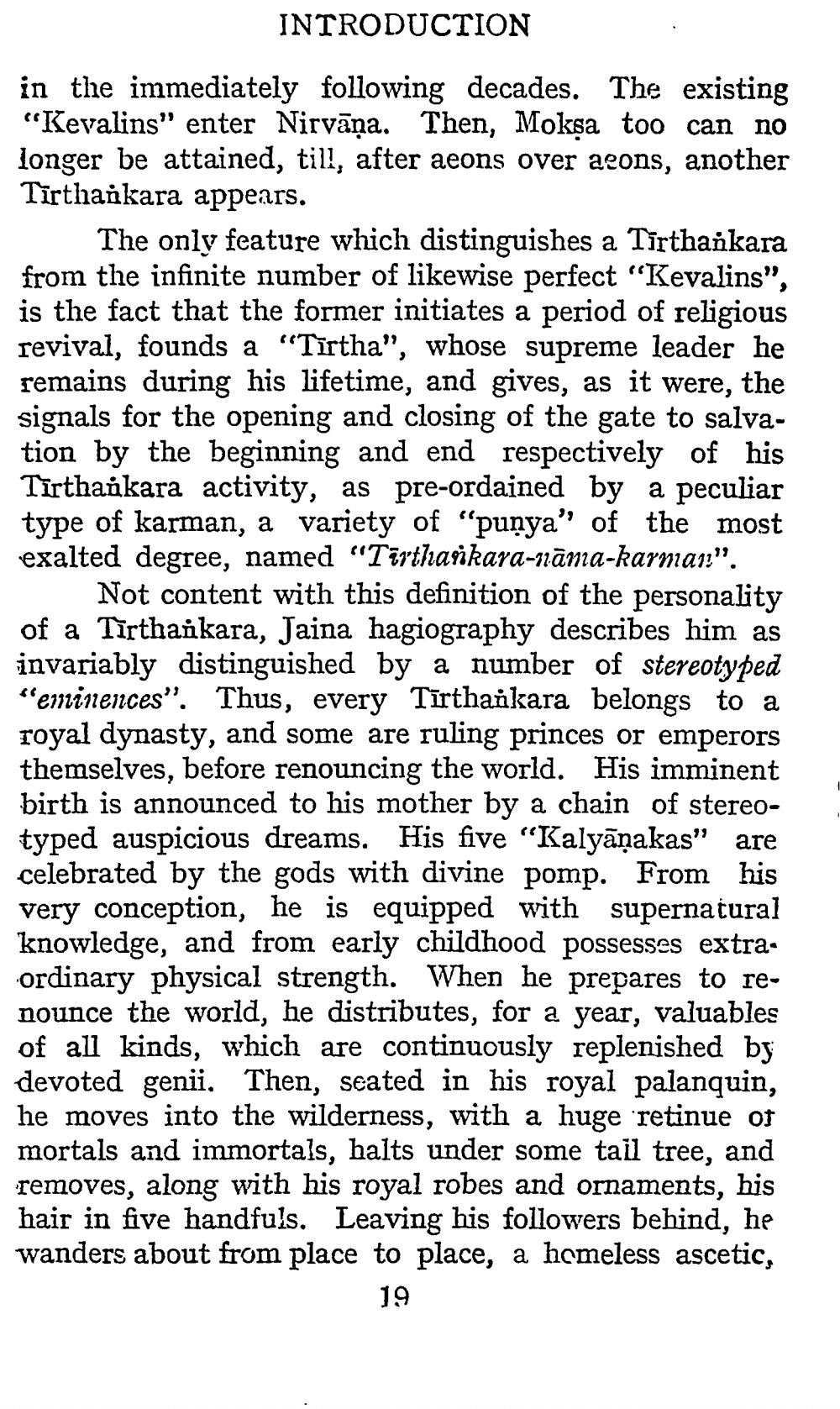________________
INTRODUCTION
in the immediately following decades. The existing “Kevalins" enter Nirvāņa. Then, Moksa too can no longer be attained, till, after aeons over acons, another Tirthaikara appears.
The only feature which distinguishes a Tirthankara from the infinite number of likewise perfect "Kevalins", is the fact that the former initiates a period of religious revival, founds a "Tirtha", whose supreme leader he remains during his lifetime, and gives, as it were, the signals for the opening and closing of the gate to salvation by the beginning and end respectively of his Tirthaikara activity, as pre-ordained by a peculiar type of karman, a variety of "punya' of the most exalted degree, named "Tortharkara-zrānia-karnian?".
Not content with this definition of the personality of a Tīrthaikara, Jaina hagiography describes him as invariably distinguished by a number of stereotyped “eminences". Thus, every Tīrthaikara belongs to a royal dynasty, and some are ruling princes or emperors themselves, before renouncing the world. His imminent birth is announced to his mother by a chain of stereotyped auspicious dreams. His five "Kalyāņakas" are celebrated by the gods with divine pomp. From his very conception, he is equipped with supernatural knowledge, and from early childhood possesses extra. ordinary physical strength. When he prepares to renounce the world, he distributes, for a year, valuables of all kinds, which are continuously replenished by devoted genii. Then, seated in his royal palanquin, he moves into the wilderness, with a huge retinue of mortals and immortals, balts under some tail tree, and removes, along with his royal robes and ornaments, his hair in five handfuls. Leaving his followers behind, he wanders about from place to place, a homeless ascetic,
19




